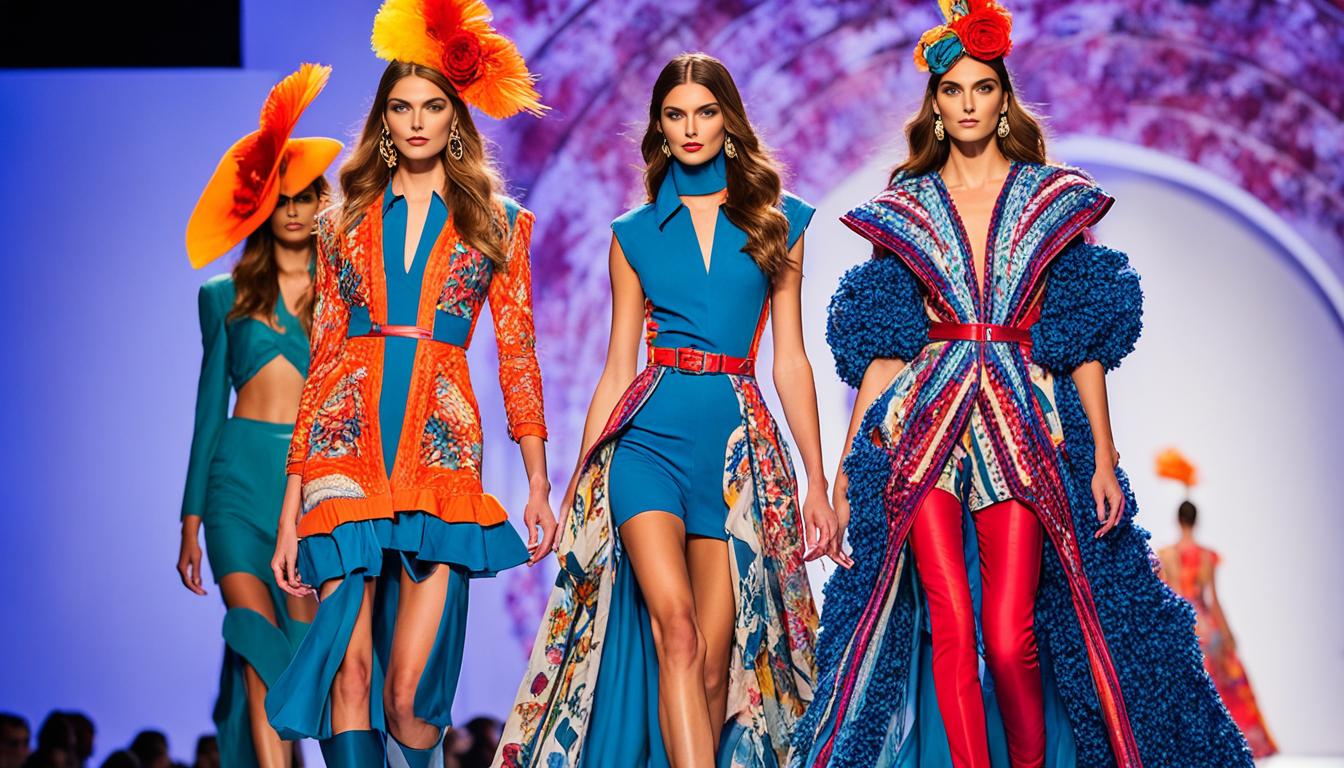“In the long run, the economy and the environment are the same thing. If it’s un-environmental it is uneconomical. That is the rule of nature.” These are not my words, but the powerful insights of Mollie Beattie, a well-respected former director of the U.S. Fish and Wildlife Service. Essentially, she highlighted the intrinsic connection between our economy and environment, a principle that rings true in the world of style and fashion as well.
In our pursuit of chic and stylish wardrobe staples, we have often overlooked their environmental implications, leading to unsustainable practices in clothing production and consumption. However, with the rise of sustainable and designer fashion, we are witnessing a seismic movement towards eco-chic, bringing sustainable principles to the forefront of personal style.
Key Takeaways
- The world of fashion is shifting from unsustainable practices to adopting a sustainable and eco-chic approach.
- Personal style and wardrobe choices have a significant impact on the environment and economy.
- Leadership in fashion institutions plays an enormous role in encouraging a sustainable culture.
- Designers, consumers, and brands contribute to the evolution of eco-chic within the industry.
- Sustainable materials and ethical practices have become a priority in the modern fashion landscape.
- Wardrobe curation is a balance between personal aesthetics and environmental consciousness.
The Evolution of Eco-Chic: A Blend of Style and Sustainability
Sustainable fashion is more than a trend; it’s a reflection of our times, a direct response to current global concerns and a way forward for a healthier planet. This section explores the historical progression of sustainable fashion, paying homage to the avant-garde creators of this movement, while exploring how ethical practices directly influence the trends of the industry.
A History of Sustainable Fashion
Emerging from the shadows of mass production, sustainable fashion began as an earnest attempt to minimize environmental degradation and uphold ethical labor practices. This journey began with innovative designers who dared to challenge the fashion industry’s status-quo, embracing materials like reused textiles and natural fibers to create uniquely styled outfits that resonated with eco-chic aesthetics.
Leading Sustainable Designers
The vanguard of sustainable fashion encompasses a group of visionary designers, whose creations set the stage for contemporary eco-chic essentials. Pioneers like Stella McCartney, Eileen Fisher, and Patagonia have paved the way, pushing for relentless innovation while staying true to ethical practices. Their work has shown that fashion does not have to compromise on style or the environment.
The Impact of Ethical Practices on Fashion Trends
The ripple effects of ethical practices in fashion are far-reaching and profound. These practices have undeniably shaped industry trends, driving consumer demand for sustainable clothing. Even more impressively, they’ve influenced personal style, showing that fashion enthusiasts can maintain their sophisticated tastes without compromising on environmental ideals.
Below is a summary of key trends and practices that have become cornerstones of sustainable fashion:
| Trend | Description |
|---|---|
| Sourcing and Transparency | Fashion brands are prioritizing transparency by openly sharing information about their sourcing and production processes, allowing consumers to make informed choices. |
| Integrative Design | Designers are blending the principles of style and sustainability, shaping new aesthetics that are both conscious and chic. |
| Reusing Textiles | Many brands are elevating the use of recycled, reused, and repurposed materials as a stylish and responsible option. |
The above table brings to life the exciting interplay of style, sustainability, and ethical practices in today’s fashion culture. As leaders in sustainable fashion continue to reveal their inventive visions, they promise a future where style is not just about looking trendy, but about being mindful and responsible – a true embodiment of eco-chic.
Curating Your Eco-Friendly Wardrobe
In today’s age of fast fashion and ever-changing trends, curating an eco-friendly wardrobe has become more pressing than ever. As we aim for a sustainable lifestyle, style and fashion shouldn’t take a back seat. Instead, these elements can become the driving force behind making our wardrobe as eco-friendly as possible.
Selecting Timeless Pieces
Key to curating a sustainable wardrobe is the inclusion of timeless pieces. These are classic staples that defy fashion’s ephemeral trends, instead offering an enduring touch of style. Selecting such items not only ensures that your wardrobe remains fashionable for years, but it also lessens the environmental mark made by the constant cycle of buying new clothes. A few essential pieces, such as a chic black dress made from organic cotton or a designer jacket fashioned from recycled material, can be mixed and matched to create a multitude of stylish looks while keeping sustainability at the heart of your personal style.
Maintaining Personal Style with Eco-Conscious Brands
Aligning your personal style with eco-consciousness need not be a daunting task. Many fashion brands today prioritize eco-friendly practices, creating fashionable and high-quality clothing using sustainable materials. From Stella McCartney’s luxury organic cotton pieces to Patagonia’s recycled polyester activewear, there are ample choices for the environmentally conscious fashion enthusiast.
From Runway to Closet: Popular Sustainable Materials
Sustainability and style are no longer mutually exclusive, and nowhere is this more evident than on the global fashion runways. Designers are increasingly incorporating sustainable materials into their collections, demonstrating that eco-friendly fashion can be as chic and glamorous as traditional alternatives. Materials like organic cotton, recycled polyester, and even innovative textiles like Pinatex and Tencel, once seen only on high-fashion platforms, are now becoming everyday closet staples as we stride towards an environmentally responsible fashion future.
FAQ
What is the role of leadership in sustainable fashion?
How does the history of sustainable fashion impact current trends?
How can I curate an eco-friendly wardrobe while maintaining my personal style?
Who are some of the big names in sustainable fashion design?
What are some popular sustainable materials used in fashion design?
Source Links
- https://berkeleycollege.edu/berkeley-today/2024/02/10-types-of-management-styles.html
- https://www.fira.it/albo-certificatori-dei-crediti-dimposta-rs-innovazione-e-design-attiva-la-piattaforma-per-le-domande-di-iscrizione/
- https://www.puc-campinas.edu.br/design-de-moda-tem-agenda-cheia-de-atividades-na-semana-de-acolhida/




